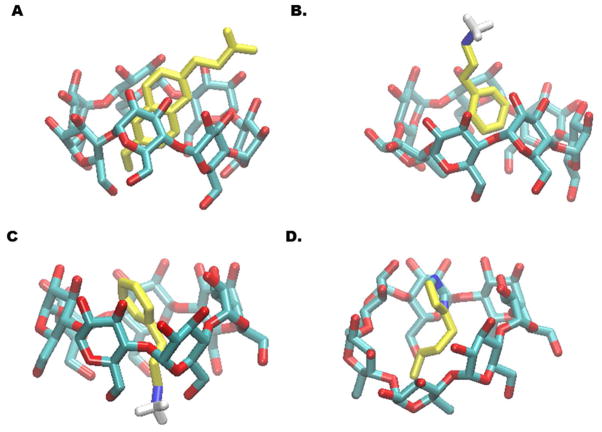Figure 5.
Binding modes of β-CD host-guest systems. Binding is driven by the hydrophobic enclosure of the non-polar group on the guest(A). Most guests are found in binding modes with their polar group sticking toward the primary (down-state) or secondary (up-state) alcohols. A majority of host-guest complexes found in the up-state conformation feature the guest’s polar group solvent exposed (B). This conformation is usually found in equilibrium with bound conformations where the guest is forming a hydrogen-bond in the down-state (C). However, some guests can be found with a hydrogen bond from the guest to the host in the up-state binding mode (D). The guests in these complexes are: nabumetone (A), 3-phenylpropylammonium (B/C)and 1-butylimidazole (D).

